Hamas degraded, but peace in Gaza still a long way off
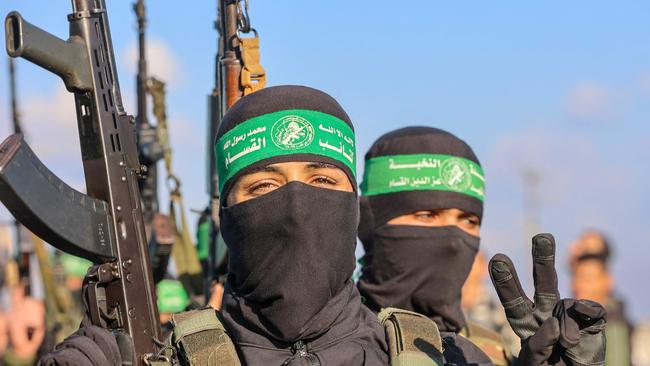
Watching Hamas’s behaviour featuring show bags, “graduation certificates” and incitement of blood lust in the baying mob reminds one of a morbid circus of horror movie clowns.
There are understandable views that all that’s happened in Gaza is the creation of a new generation incentivised to join the terror groups to seek revenge and double down on the genocidal ideology of the complete destruction of Israel.
But this is partly a product of “frame fixation” syndrome: extrapolating larger conclusions based on what we see in a camera frame, be this casualty figures or the scale of a crowd or armed force.
As jihadist terrorists, Hamas’s primary line of operation is propaganda.
It’s the modern equivalent of riding around on horses behind a hill trailing dust-raising branches to give the impression your force is much larger.
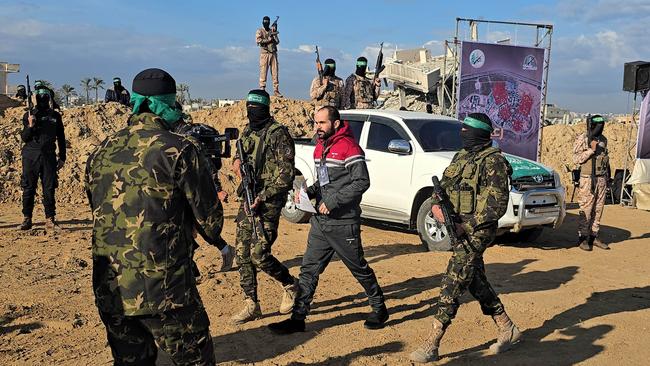
When the cameras pan back at these staged hostage release events it’s clear the crowd is smaller than the impression given by close-ups.
If you froze the image and counted the armed “extras” it would amount to only a few hundred at most.
Before the war Hamas was in total control of the Gaza Strip, building about 500km of underground military infrastructure, elaborate rocket and missile launch sites, and weapons manufacturing facilities.
There was a compulsory military training regimen for children from the age of 12.
The Hamas administration was geared to underpin its military capabilities: systematic indoctrination in education, revenue harvesting, mainly through border taxes and receipt of foreign funding, and maintaining a tyrannical regime for total control.
The more sophisticated weapons supplied by Russia, Iran, North Korea and China were smuggled in through the tunnel network.
Hamas military forces were organised territorially into five brigades of about 24-30 battalions. They claimed to have 40,000 gunmen, with PIJ controlling another 20,000. This could be expanded in full-scale conflict by mobilising their trainees under 18. Hamas and PIJ doctrine included breaking down into terrorist cells, which would be able to draw on weapons and ammunition caches, pre-positioned all over the Gaza Strip.
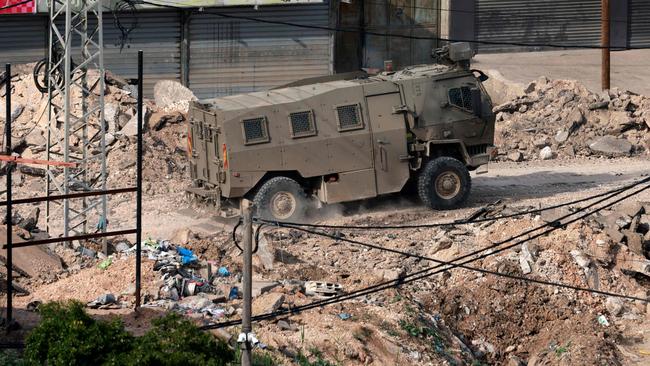
There is no doubt Israel Defence Forces operations have degraded the organised formation and unit structure of Hamas and PIJ, and their ability to operate under that command structure.
They don’t have the ability to conduct brigade-scale operations such as the brutal October 7 attack. Senior command direction has suffered significantly. There are no states willing to replace Iran’s billions that paid for bribes to allow smuggling. The ability of Hamas to exercise the same control of the territory before the war is potentially contestable by other local clan actors.
Hamas’s fighting strength has suffered severe deterioration with about 20,000 combatants killed and an unknown number taken prisoner, likely to amount to several thousand. But Hamas’s disaggregation into terrorist cells means it could continue to conduct asymmetric guerrilla operations indefinitely without some further dynamic that convinces them to refrain from fighting.
In terms of leadership at the tactical level, the “next man up” system of Hamas limits the effect of targeting leaders.
As was the case in Afghanistan, it would be a mistake to play the futile game of lethal “whack a mole” without a strategic political plan to deliver effective results. The attritional tactics Hamas will devolve to include “shoot and scoot”, sniper attacks, low-level ambushes, IED and reserve demolition emplacements, and sabotage. All this will be conducted in civilian clothing and not the pantomime gear on display in the hostage handovers.
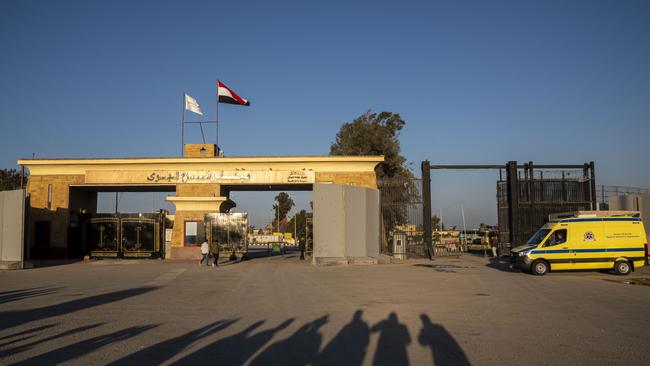
To avoid this endless cycle, Israel must look for circuit breakers.
One Israeli goal has apparently been to degrade Hamas to the point where sufficiently armed and motivated clans challenge Hamas for control and build sufficient support to deny Hamas the ability to operate under the cloak of the community.
Whether this approach can succeed is an open question. The war has no doubt intensified hostility to Israel in Gaza.
But it’s unlikely to have generated increased long-term support for Hamas. A credible security and administrative alternative to Hamas would need to be capable of providing cast-iron security guarantees for, and co-operation with, Israel.
Gazans will have to be shown a “peace dividend” that enlists them in an alternative future.
The acid test of whether the ceasefire delivers a path to the end of the conflict will be revealed in phase three negotiations.
This will require an emerging Palestinian leadership assuming fuller responsibility and with a genuine intent to establish a separate state committed to the rule of law, addressing Palestinian grievances relating to corruption and good governance, and eliminating terrorist cells.
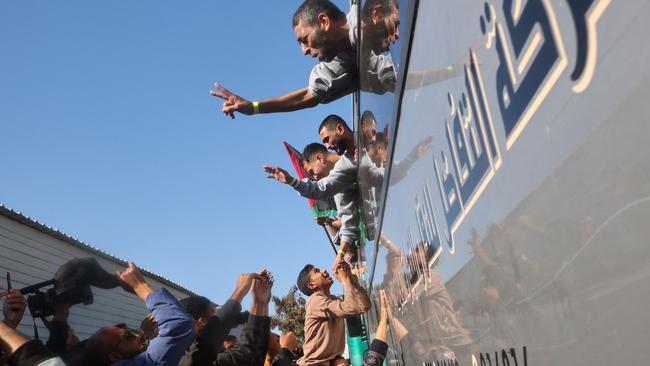
The international community and the Israelis shouldn’t be fooled by the theatre of the absurd on display in Gaza into believing Hamas remains a significant threat to Israel.
A great deal has been achieved by IDF operations.
The possibility has opened for a dramatic recasting of the region leading to a sustainable security gain and a foundation to build a peace.
It’s hard to be optimistic, but maybe Donald Trump has some Abraham Accord-style incentives up his sleeve that could deliver the necessary collaboration and compromise. For the President’s Nobel Peace prize aspirations, the road to Stockholm passes through Gaza.
Mike Kelly is co-convener of Labor Friends of Israel. Anthony Bergin is a senior fellow at Strategic Analysis Australia.

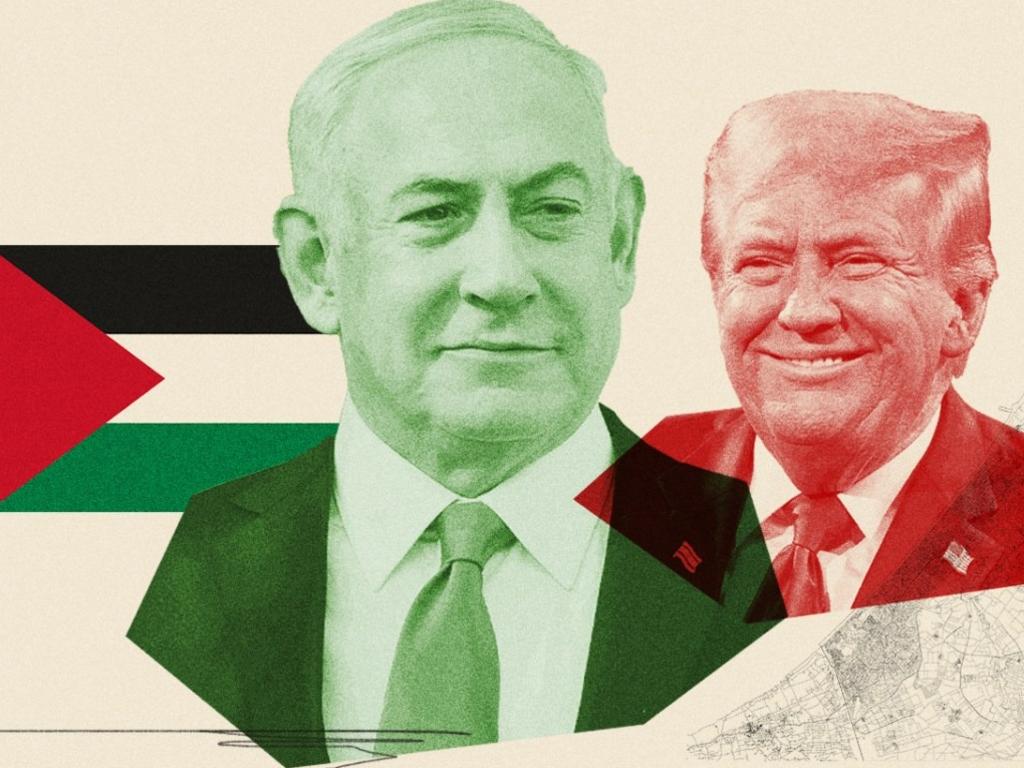
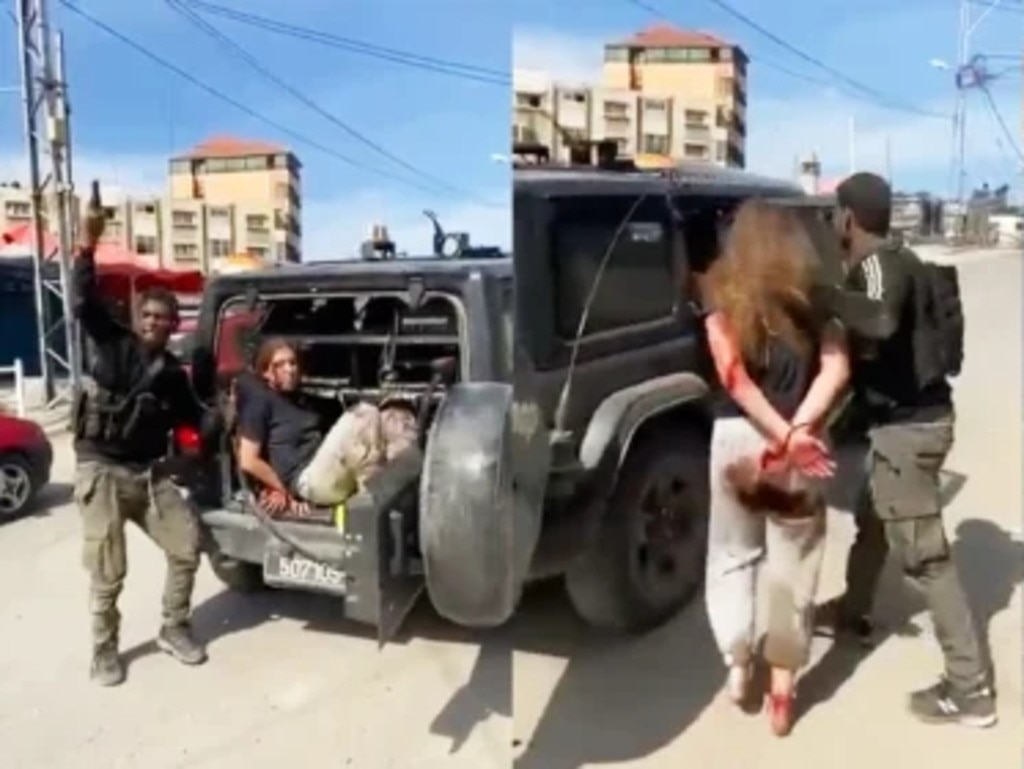


The spectacle from Gaza during hostage releases by Hamas and Palestinian Islamic Jihad have raised equal portions of disgust and concern.